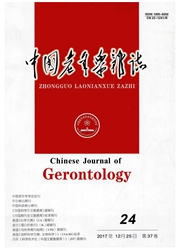

 中文摘要:
中文摘要:
目的 探讨南通地区1999至201 1年肝癌病死率和动态变化趋势,为今后制定相应防治措施提供科学依据.方法 采用国际死因分类法(ICD-10)和(ICD-9)对死因分类,用x2检验比较肝癌病死率在不同性别、年龄和年份间的差异,建立灰色系统GM(1,1)模型预测5年肝癌病死率.结果 南通地区1999至2011年肝癌标化病死率呈下降趋势(x 2=57 545.98,P<0.001),女性标化病死率下降趋势相比于男性较为缓慢;总病死率为53.41/10万,男女性病死率分别为80.81/10万,26.94/10万,男、女间病死率差异有统计学意义(x 2=13625.42,P<0.001);无论性别,肝癌病死率均随着年龄的增高而呈上升趋势(男性趋势x 2=39 878.8,P<0.001,女性趋势x 2=20105.3,P< 0.001,总趋势x 2=57 545.98,P<0.001).女性40岁后、男性35岁后肝癌病死率上升明显.灰色模型预测方程为(Y)t=-1256.28e-00375t+1315.5,预测到2016年肝癌病死率将降为25.56/10万.结论 南通地区肝癌患者病死率整体呈现下降趋势,肝癌防控工作初见成效,但病死率仍保持较高水平,35岁以上男性患者和40岁以上女性患者是重点防治对象,应采取更为有力措施降低肝癌病死率.
 英文摘要:
英文摘要:
Objective To investigate the mortality rates of hepatocellular carcinoma (HCC) in Nantong,China from 1999 to 2011,in order to uncover dynamic trends and provide reasoned advice on intervention strategies to decrease HCC incidence and mortality in Nantong in the future.Methods Versions 10 and 9 of the WHO International Classification of Diseases (ICD-10 and ICD-9) were used to determine the number of HCC deaths in Nantong,China for the study's range of years.Thex2 test was applied to compare the HCC mortality rates according to sex and age.The Grey system GM(1,1) model was used to predict the next-5-year HCC mortality for Nantong.Results Analysis of the standardized mortality in Nantong showed a slight decreasing trend from 1999 to 2011 (x2 =57 545.98,P 〈 0.001),with males showing a steeper decrease than females.The total mortality of HCC during these years was 53.41 per 100,000 people,with mortality among males being significantly higher than that among females (80.81 per 100,000 people vs.26.94 per 100,000 people;x2 =13 625.42,P 〈 0.001).In general,HCC mortality increased with increase in age (general trend:x2 =57 545.98,P 〈 0.001;male trend:x2 =39 878.8,P 〈 0.001;female trend:x2 =20 105.3,P 〈 0.001).However,HCC mortality increased significantly in women after the age of 40 and in men after the age of 35.The GM(1,1) equation was:Yt=-1265.28e-0.0375t+ 1315.5,which predicted that the HCC mortality will decrease to 25.56 per 100,000 people in 2016.Conclusion Although HCC mortality generally decreased from 1999 to 2011,the rate remained high.Public health intervention strategies may be more effective if they focus on males over the age of 35 and females over the age of 40.
 同期刊论文项目
同期刊论文项目
 同项目期刊论文
同项目期刊论文
 期刊信息
期刊信息
